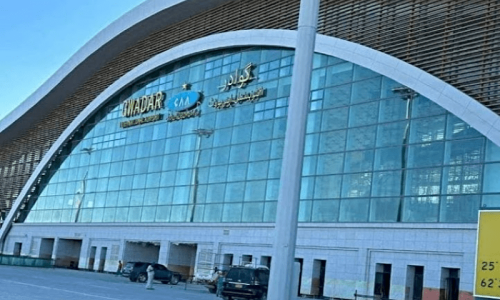KARACHI, Nov 2: The price of coal on the international markets is on the mount. After having enjoyed relatively long period of subdued prices, the industries in the energy and cement sectors, which depend on coal as a fuel for production, are bracing for an impact on the bottom line.
Abia Zaidi, analyst at Shajar Capital looking over the coal price trend said that the benchmark Richard Bay, in South Africa had climbed to $80.48 per tonne on Oct 18, from $71.34 per tonne on Sept 6. Pakistan imports from Richard Bay as it is in closer proximity to the country, compared to the other benchmark New Castle on the eastern coast of Australia.
“Besides, cement companies which have export markets in South Africa, bring back coal after unloading cement at those ports, cutting down the cost of shipment”, said a sector observer. Abia calculated that coal constituted 37 per cent of the cost of goods sold. “Cement prices can take a hit of 3pc to 7pc on their earnings, on increase of $5 in coal prices”, analyst said.
The research house at brokerage Topline Securities worked out that $5 cost change in price of coal results in increase/decrease of Rs4 on per bag of cement.
A commodity price trend watcher admitted that the price of coal was increasing; the price of November contract was recently quoted at $90 per tonne. But he argued that historically demand spikes in winter, but settles down as the weather gets less cruel.
The financial year 2013 saw cement sector profitability almost double (up 94pc) to Rs31 billion. Higher gross margins as a result of firm local cement prices and lower coal prices were major reasons for the shinning bottom lines of concrete companies. “Although coal prices in the international market were depressed in FY13, the rapid fall in the rupee value against the dollar made coal imports expensive”, laments a cement producer.
Experts stress that the fortunes of energy and coal companies would change with the fluctuations in prices of coal. They call for exploring the indigenous sources of this essential raw material which is likely to show enormous growth in demand as more and more energy and cement companies convert from costly fuel to coal.
The Pakistan Economic Survey 2012-13 notes: “Pakistan has huge coal resources estimated at over 186 billion tonnes. The major users of coal are the cement sector and brick kilns; during FY2012, about 48pc of total coal was consumed by cement companies while 41pc was utilised by brink kiln industry”, the survey notes.
Meanwhile, according to the Coal and Energy Development Department Government of Sindh, out of the 186 billion tonnes of coal reserves, as much as 175bn tonnes are found in Thar, in Tharparkar district Sindh. Thar coal is one of the largest lignite deposits in the world. Yet the rich resources remain untapped for a variety of reasons.















































Dear visitor, the comments section is undergoing an overhaul and will return soon.